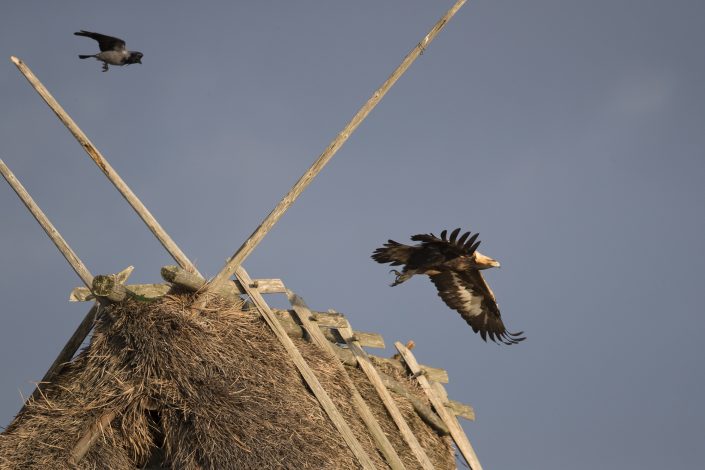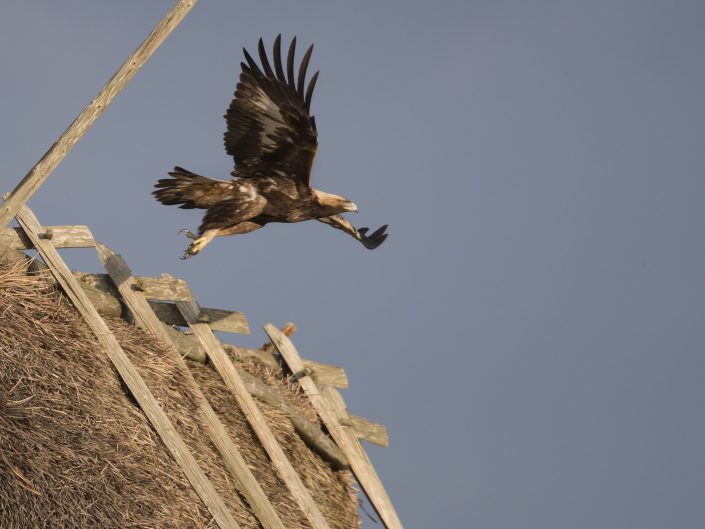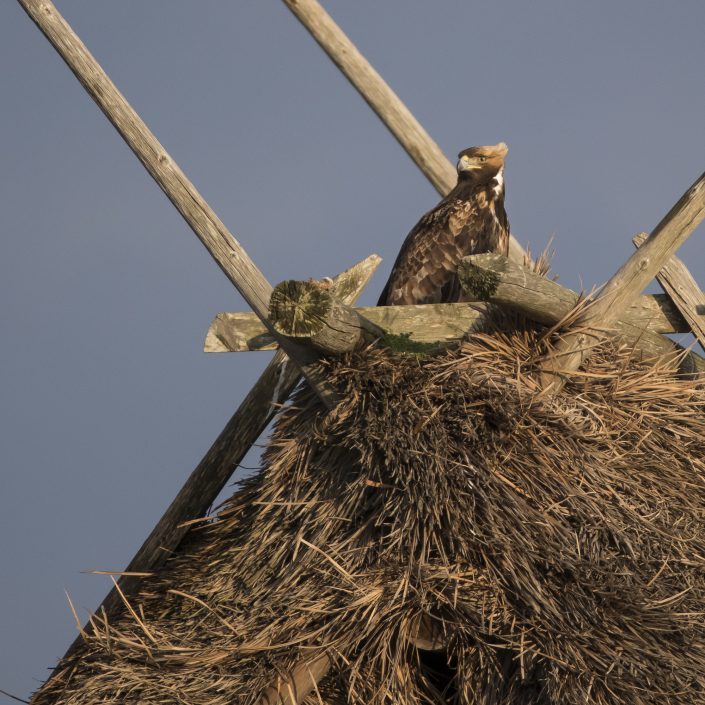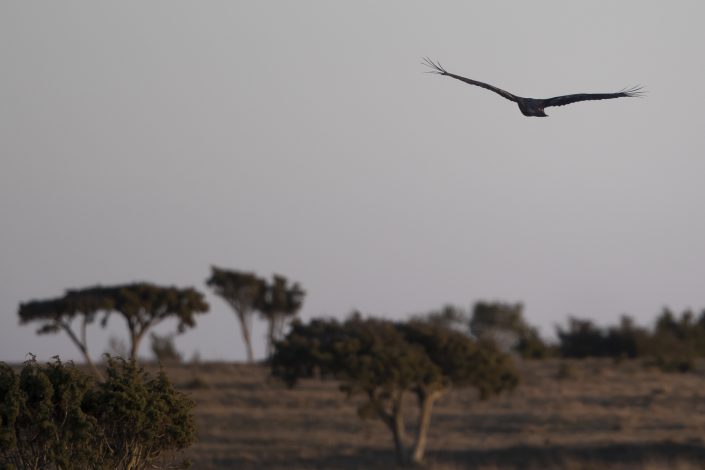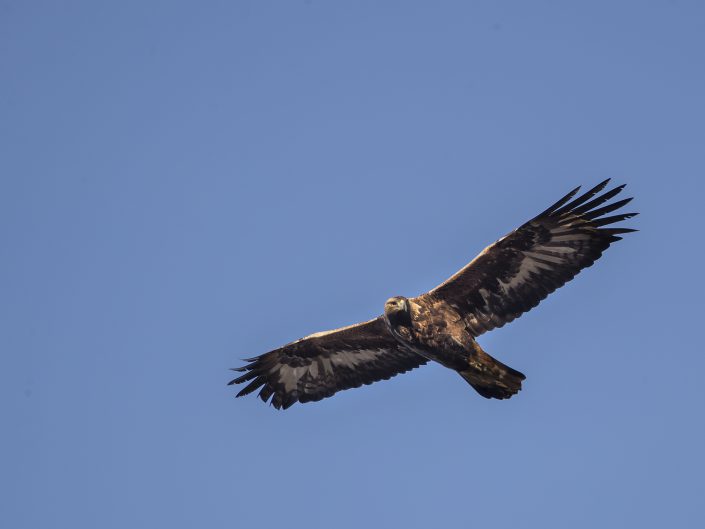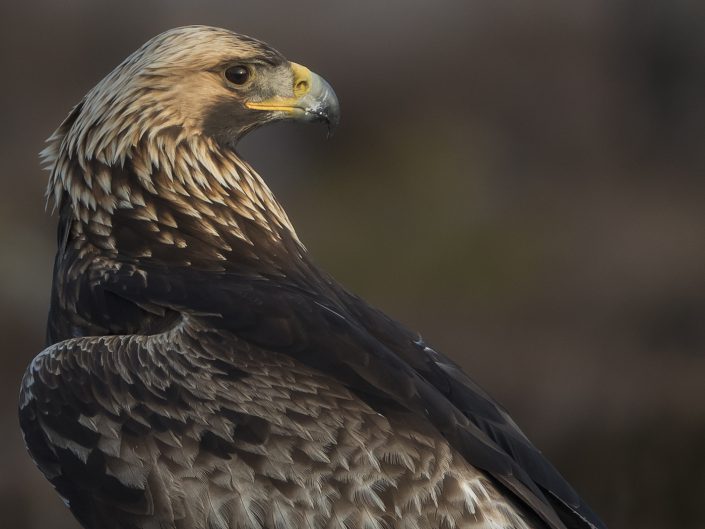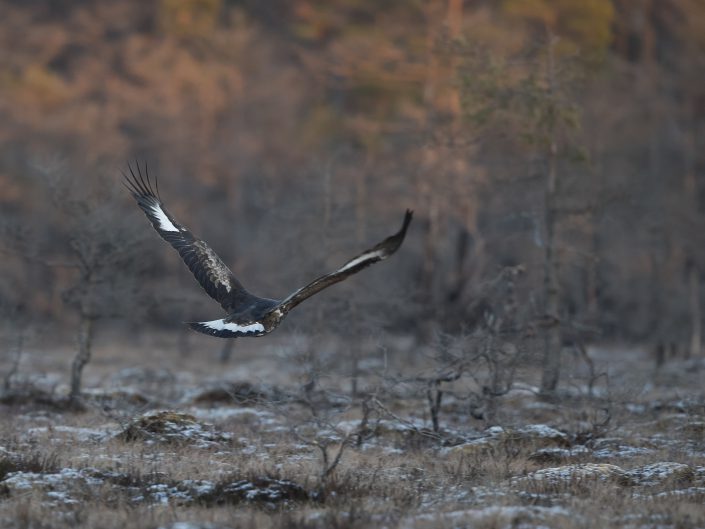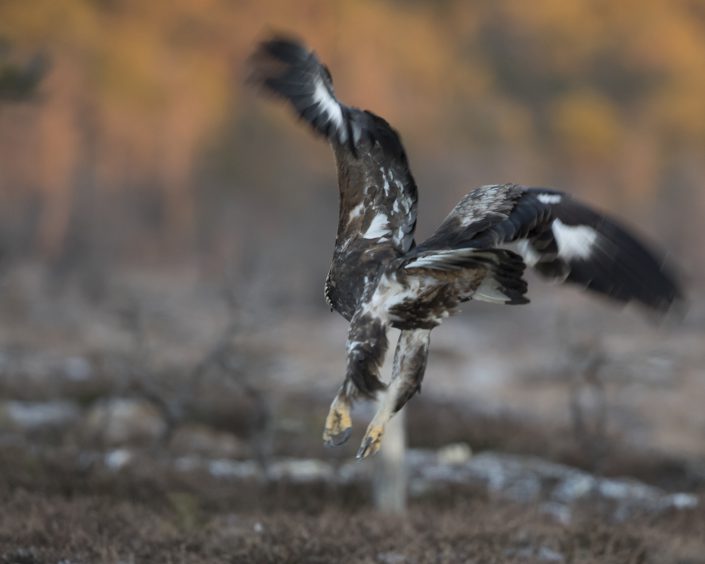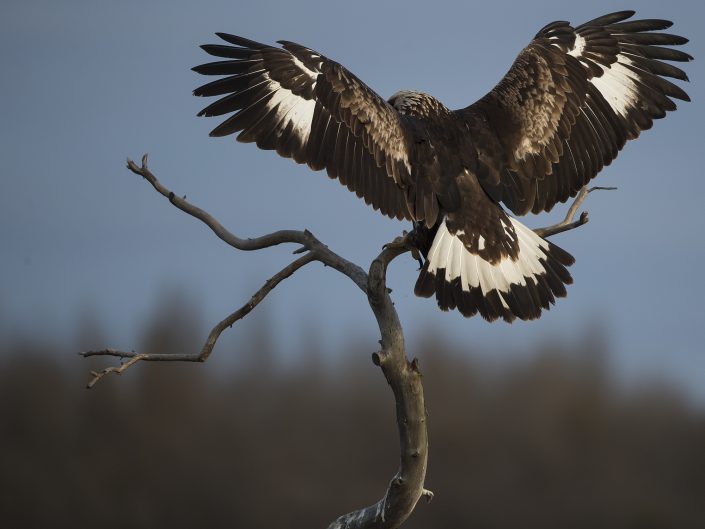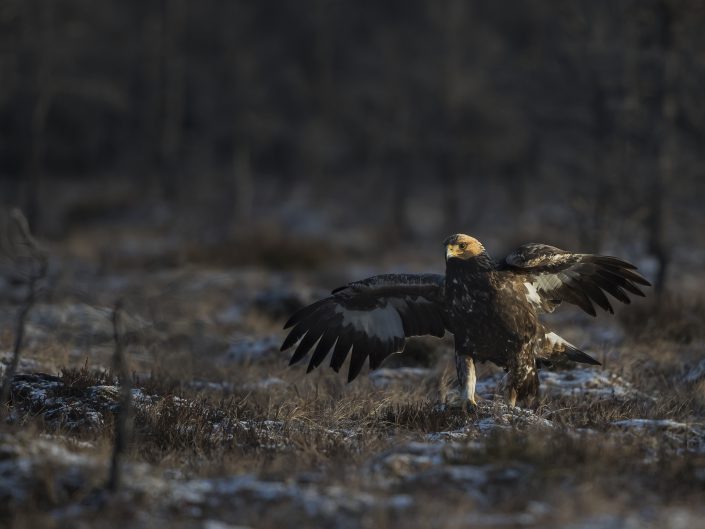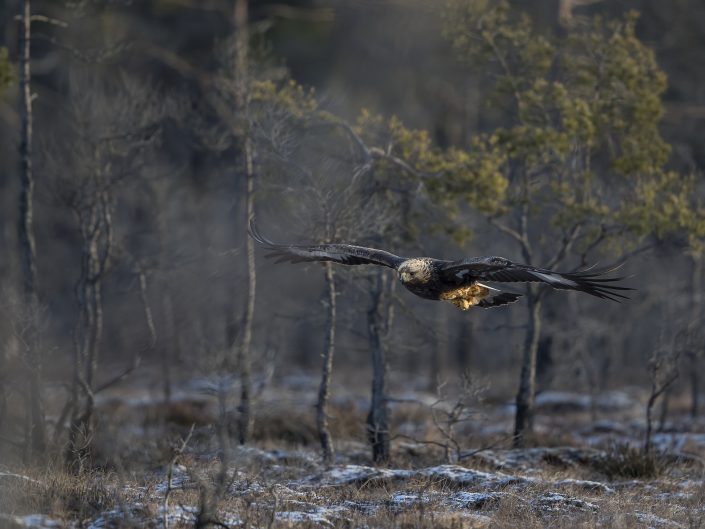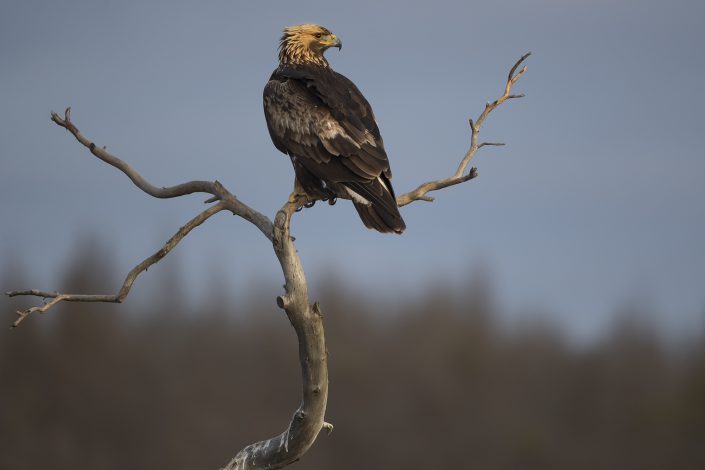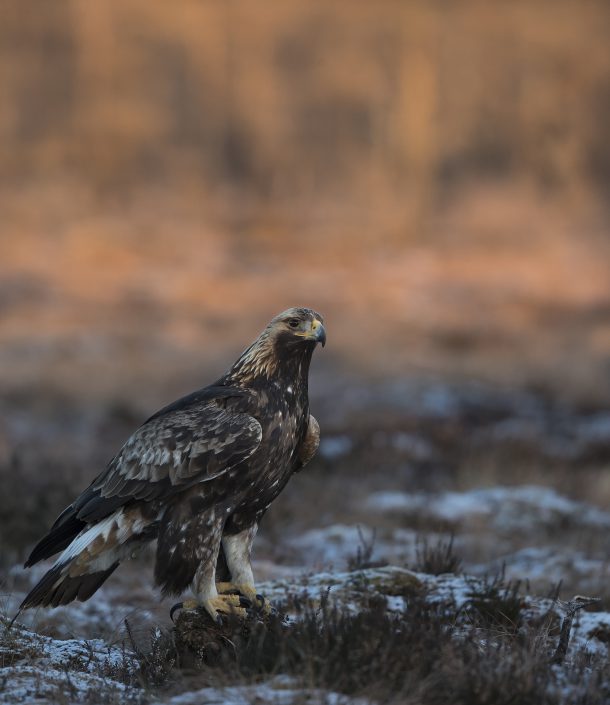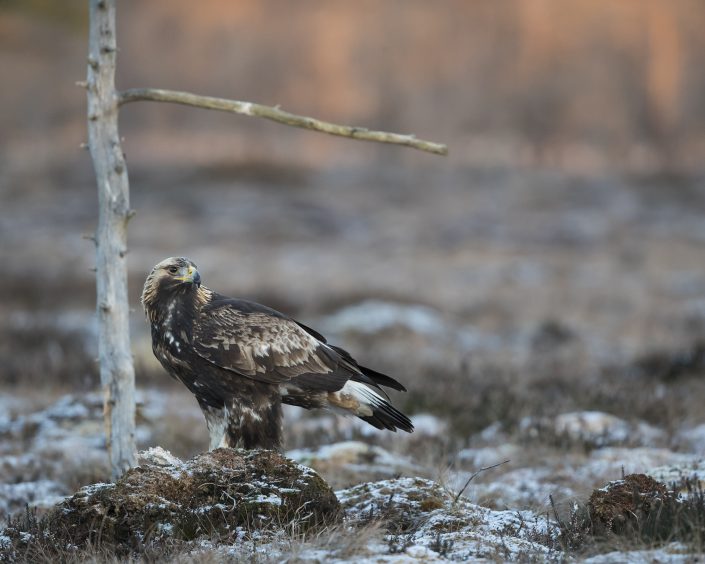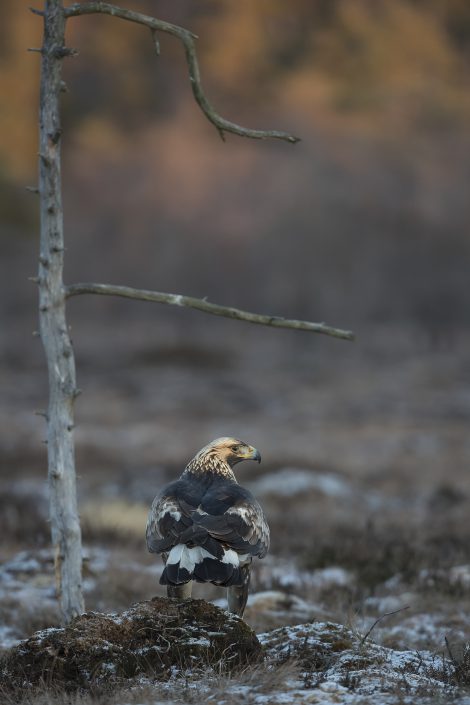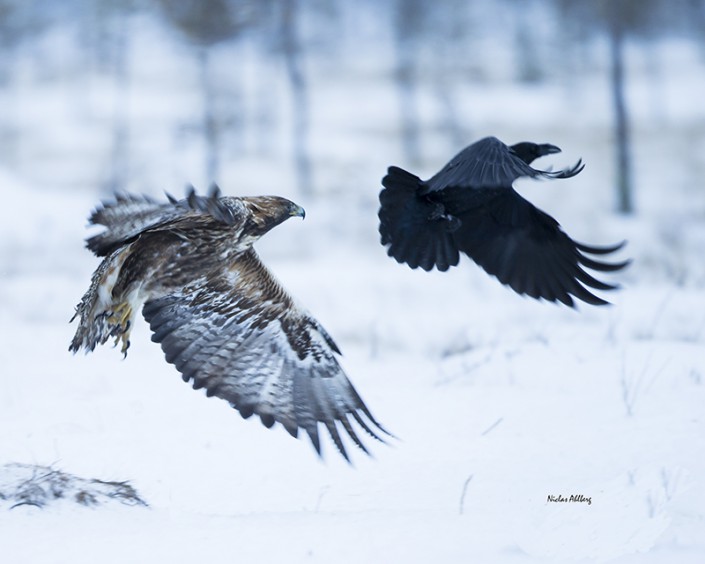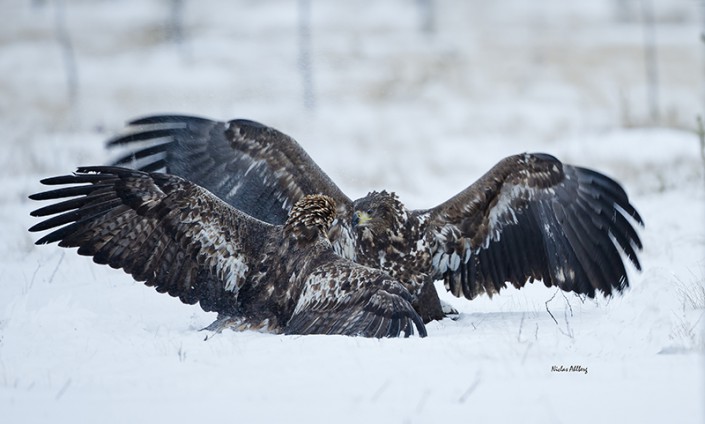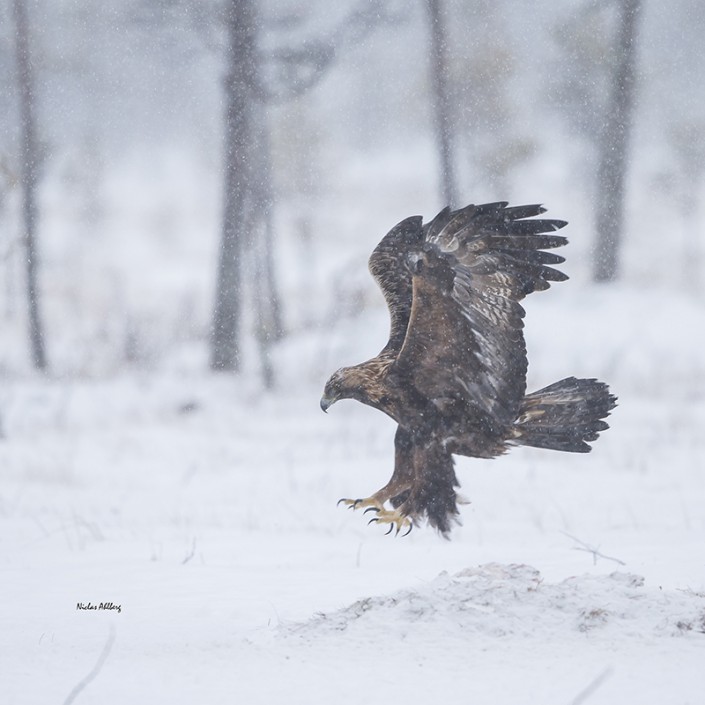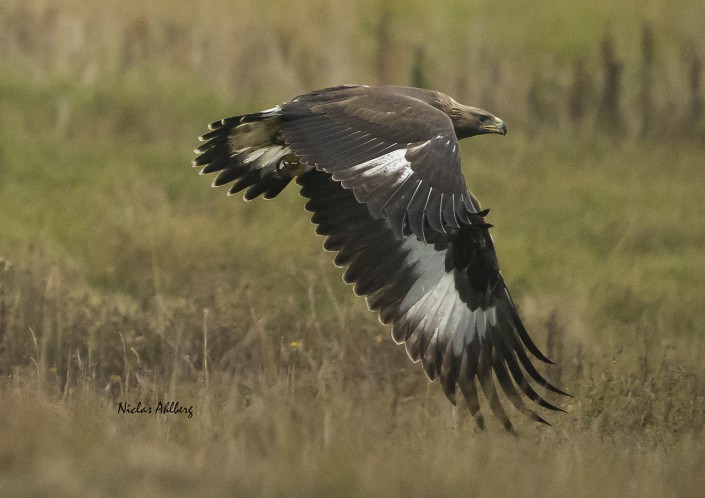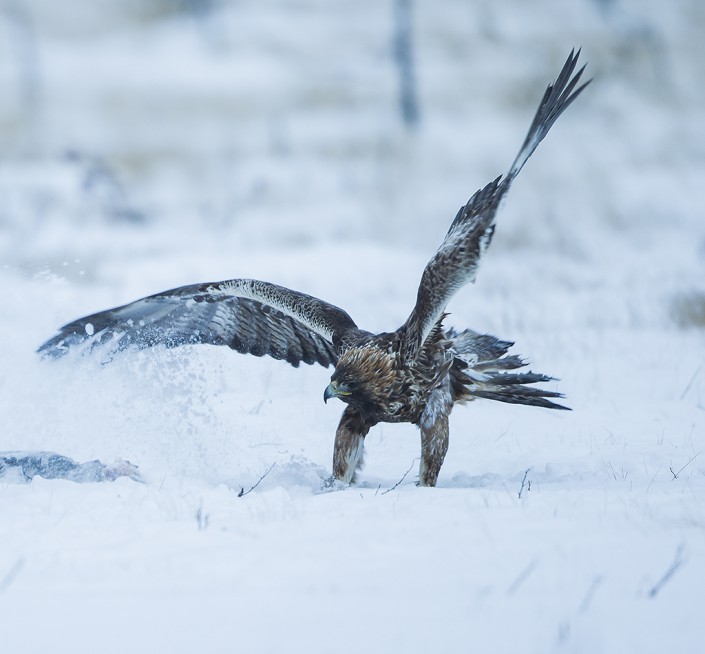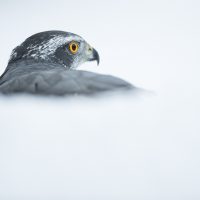This post is also available in: Swedish
Golden eagle – Aquila chrysaetos
Golden eagle – Aquila chrysaetos
is one of the best-known birds of prey in the Northern Hemisphere. It is the most widely distributed species of eagle. Like all eagles, it belongs to the family Accipitridae. These birds are dark brown, with lighter golden-brown plumage on their napes. Immature eagles of this species typically have white on the tail and often have white markings on the wings. Golden eagles use their agility and speed combined with powerful feet and massive, sharp talons to snatch up a variety of prey (mainly hares, rabbits, marmots and other ground squirrels).
Golden eagles maintain home ranges or territories that may be as large as 200 km2 (77 sq mi). They build large nests in high places (mainly cliffs) to which they may return for several breeding years. Most breeding activities take place in the spring; they are monogamous and may remain together for several years or possibly for life. Females lay up to four eggs, and then incubate them for six weeks. Typically, one or two young survive to fledge in about three months. These juvenile golden eagles usually attain full independence in the fall, after which they wander widely until establishing a territory for themselves in four to five years. At one time, the golden eagle lived in a great majority of temperate Europe, North Asia, North America, North Africa, and Japan. Although widespread and quite secure in some areas, in many parts of the range golden eagles have experienced sharp population declines and have even been extirpated from some areas. The total number of individual golden eagles from around the range is estimated to range somewhere between 170,000 and 250,000 while the estimated total number of breeding pairs ranges from 60,000 to 100,000.
It sounds like this
Recording by Tero Linjama from Xeno canto
A short clip from a session i Västmanland, Sweden.



















